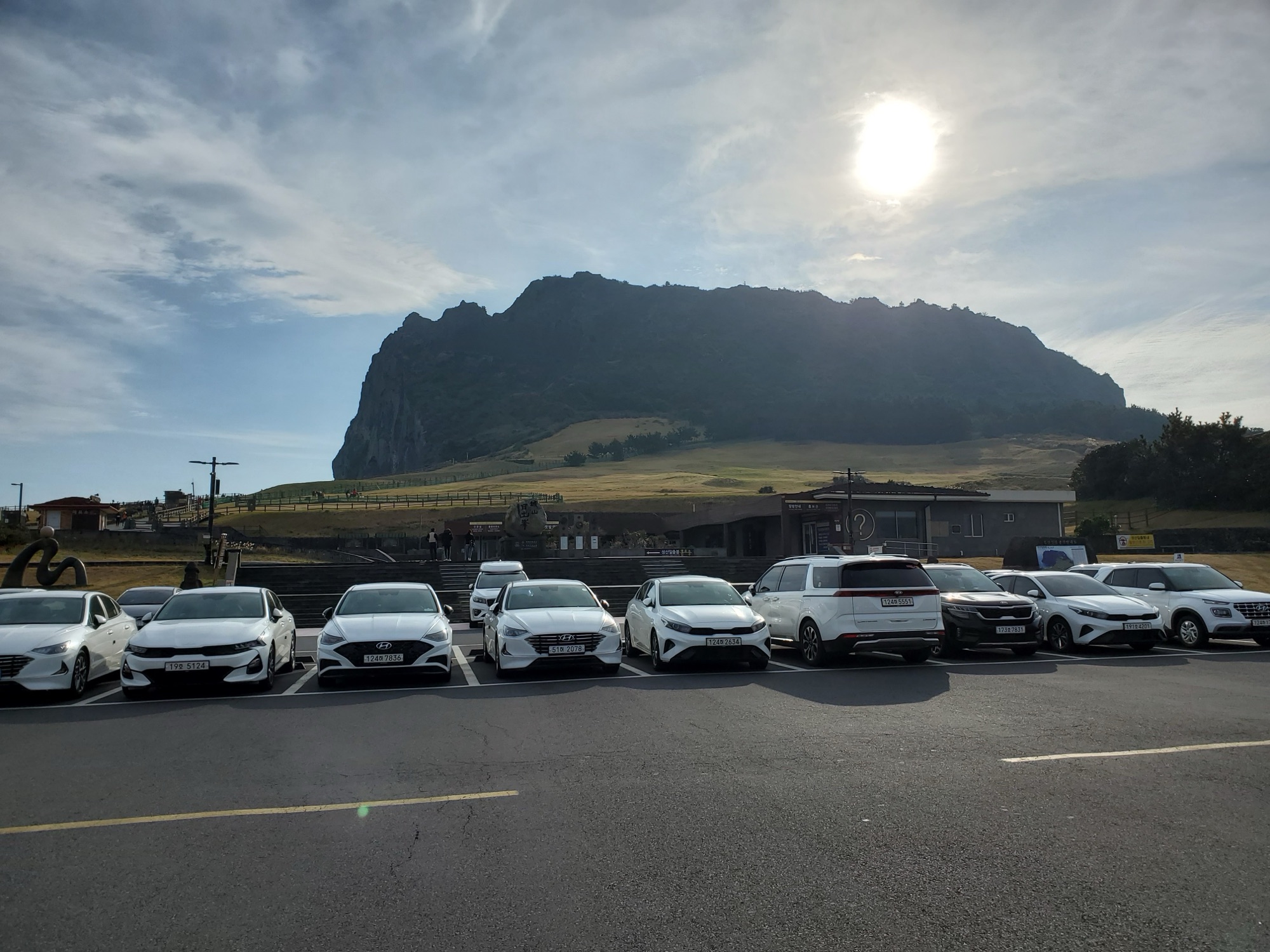Renting a car in Korea
(Updated 4/30/24)
Korea is known for its public transportation infrastructure: buses, trains, and subways are incredibly cheap and convenient and allow you to traverse the entire country with. But if you are staying in Korea for a longer period of time, you may want to get off the beaten track a bit, and visit some of the many destinations that are harder to access via public transportation. This post will offer a couple of hints for traveling by car. Driving a car around Korea is fairly straightforward and gives you the chance to explore some of the more hidden corners of the country, without having to worry about bus and train schedules or connections. There are so many wonderful sites to be explored if you are in a position to consider driving.
If you want to rent a car in Korea (and don’t have a Korean driver’s license), you will need an International Driving Permit (IDP). I have rented cars in many countries around the world, and have never actually needed one of these – except in Korea, where they take this very seriously. You must have this to rent a car here. Here are some ways to get one:
- If you’re from the US, International Driving Permits are issued by AAA (you don’t need to be a member). You can get one for $20 by going to any AAA office in the US. If you’re already in Seoul, you can also apply by mail, and it will take a few weeks.
- If you’re not from the US, you’ll need to check what kind of document from your home country will be accepted in Korea.
- You can also apply for an International Driver’s Permit in Korea, by going to the International Driver’s Permit Office at Incheon Airport. You’ll need your passport, extra passport photos, and a valid license in your home country. This may actually be the cheapest option, as it seems to cost only 8500 KRW. I think you can get it on the spot (though I haven’t done this myself), which would make it the quickest option as well, if you didn’t arrive in Korea with a IDP from your home country.
BEWARE BEWARE BEWARE of various sites that will claim to let you apply on-line, or expedite a digital “license” – these are not recognized in Korea, and will charge you considerably more money for a document that won’t do you any good.
Once you’ve got your IDP, you are ready to hit the road and enjoy the Korean scenery! A few additional thoughts…
- Depending on where you’re hoping to go, it might be best to take a train between major cities and just rent a car at your destination. Especially if you’re starting from Seoul, the traffic just getting out of the city (or back in) can be pretty bad, and the train may well be faster. (See separate post on reserving train tickets.)
- The major rental agencies are Lotte (affiliated with Hertz), and SK (affiliated with Avis). These will both allow you to book your vehicle on-line, and also allow for longer-term rentals. (If you get part way through the process of booking a ticket and something stops working, try switching the language to Korean. I have found that the English versions of Korean websites can sometimes be a bit less reliable, and sometimes something stops working.) You’ll also find some other international (Sixt, Enterprise) as well as domestic agencies, but these typically won’t have as many branch offices.
- Once you’re in your car, you can use the car’s navigation system of course, but in case you’d like to use your own… remember that Google maps doesn’t work in Korea. But Apple Maps and Waze do (along with Naver and Kakao of course.)
- You will likely encounter toll roads as you explore. I would recommend purchasing a Hi-Pass card before or when you rent your car (see below), as many of the Korean tollbooths seem to be phasing out methods of paying directly. If you make a mistake (going through the Hi-Pass lane when you don’t actually have a Hi-Pass card for instance), don’t worry. Each toll booth will have taken a picture of your license plate and the information will get back to the rental car company, which will eventually result in a charge (but not a fine, in my experience). However, as you may encounter quite a lot of tolls as you drive around, it will save you some stress to just be confident that you’ll be able to pay using Hi-Pass.
- Getting a Hi-Pass card is easy. You can pick up a pre-paid card at a convenience store, and you can add more money to your card the same way. Or, often when you rent your car, you’ll be given the option of getting a Hi-Pass card, pre-charged with some funds. When you get in the car, ask the car rental folks where to insert the card (there’s usually some kind of slot around the rear view mirror that the card has to be inserted into). Just remember to take the Hi-Pass card with you when you return your car, as it (and unused funds remaining on your card) are yours.
- Korean rest stops are a hoot, and part of what makes road-tripping in Korea a blast. They’re typically enormous, with many different food options (both fast-food kiosks as well as sit-down meals), plentiful clean restrooms, and pop-up stores selling clothes, souvenirs, and all sorts of other items. Obviously you can fill your tank as well, and some even have car washes.
Happy trails!
About the writer
Hi, I’m Lee, and my husband and I are living in Seoul for the year while I’m on sabbatical. This is the second sabbatical year we’ve spent in Seoul, and we’ve gotten to know the city pretty well. I hope you find this information useful!





